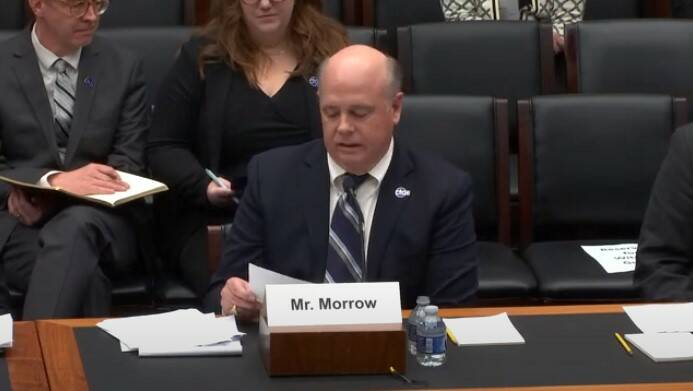Whidbey Island recently received some attention from Congress for its unique position within a rural county.
During a stakeholder meeting in the nation’s capital on March 21, members of the Subcommittee on Highways and Transit of the House Committee on Transportation and Infrastructure listened to the challenges that rural communities face when it comes to providing transit.
Todd Morrow, executive director of Island Transit, represented the Community Transportation Association of America and provided testimony as a witness about the difficulties his organization has encountered. The zero-fare transit system has an annual budget of $21 million, a fleet of more than 60 buses and a staff of 136 employees. In 2023, Island Transit expanded to include Sunday service. Around this time on-demand services were also added.
According to Morrow’s testimony, the longest route in the system – from Oak Harbor to the Clinton ferry terminal – is also the most popular, with an average of 1,798 riders on a weekday.
During the past year, Island Transit carried an average of 7,485 passengers on trips each week.
The transit system serves an aging demographic; data from the 2020 census indicated that 25% of Island County’s population was aged 65 or older. The census also showed that 13% of the population were veterans, and just over 15% identified as having a disability.
Island Transit has a 17-year plan to replace its current fleet with both hydrogen and battery electric vehicles. However, the availability of vehicles, as Morrow testified, has been severely impacted by a bus manufacturing shortage and supply chain issues. The agency’s order of nine additional vehicles is “in limbo,” he wrote, because the manufacturer is no longer in business.
During the meeting of the house subcommittee, Morrow spoke about the difficulty in transitioning the agency’s fleet because advances in zero emission technology have not successfully expanded to the smaller class of vehicles used by Island Transit. Battery range is low, and charging infrastructure is not prevalent in rural America.
“The capacity of our local power grid and grid resiliency is also a concern,” he said. “To address this, my agency has purchased acreage adjacent to our operating base with the potential for siting a micro grid there for possible additional electricity.”
Morrow also spoke about the challenges of recruiting drivers. He suggested the federal government could make changes by expediting the certification of testing labs for required drug and alcohol testing. Another area for improvement that he pointed to was the requirements to obtain a commercial driver’s license, or CDL. He advocated for an addition to the CDL passenger endorsement focused on bus driving and public transit.
In his testimony, Morrow thanked U.S. Rep. Rick Larsen, who serves as a ranking member on the House Committee on Transportation and Infrastructure, for the $7.52 million grant Island Transit was awarded to build a new transit center on South Whidbey.
Larsen, who represents the state’s second congressional district that includes Whidbey Island, also testified during the meeting about the importance of supporting public transportation in a rural community.
“A key part of realizing equity in transportation systems is ensuring smaller communities can succeed in accessing funding,” Larsen said in his statement. “Smaller communities have limited funds to design and apply for infrastructure grants and limited capacity to manage complex permitting and construction. Yet, smaller jurisdictions in my district and throughout the country are in great need of investment.”



